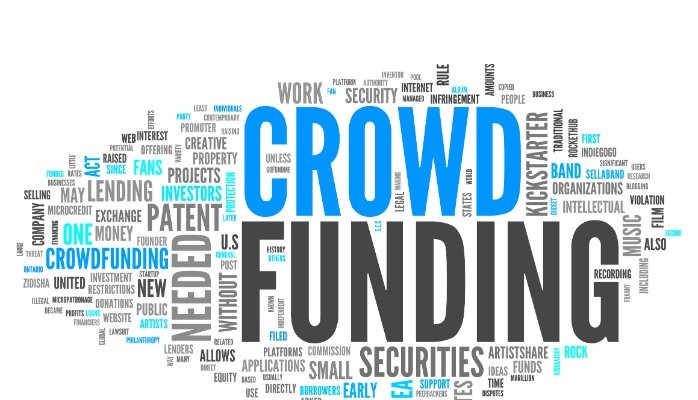Harnessing the Power of Crowdsourcing for Innovation and Growth
Crowdsourcing is rapidly transforming problem-solving across industries. What was once seen as an intriguing experiment has become a powerful new way to fund ideas, spark innovation, validate concepts, and create content. From crowdsourced R&D to crowdfunded productions, tapping the power of the masses is generating major momentum.
But how exactly is crowdsourcing revolutionizing business and technology? What are the key benefits for companies leveraging the crowd? How are platforms like Kickstarter and Wikipedia harnessing group power?

And how are industries like film being changed by crowdsourced voting models? This article will explore the rise of crowdsourcing, its applications across sectors, and why you should consider harnessing the power of the crowd.
You’ll discover real-world examples of crowdsourcing success, emerging trends to watch, and why this collaborative approach represents the future of problem-solving.
The Rise of Crowdsourcing
Crowdsourcing refers to the practice of obtaining information, services, or resources by soliciting input from a large group of people, particularly an online community. The term was first coined by Jeff Howe in a 2006 Wired magazine article, defining it as the act of taking a task traditionally performed by a designated agent and outsourcing it to an undefined, generally large group of people.
The rise of crowdsourcing has been enabled by the internet and widespread connectivity. Online platforms provide access to vast networks of potential contributors across the globe. This makes crowdsourcing fast, easy, and inexpensive compared to traditional methods.
Some of the key factors driving the adoption of crowdsourcing models include access to talent and skills that may not exist internally, the ability to tap collective wisdom and intelligence, increased speed and agility, reduced costs, improved customer engagement, and the potential for breakthrough innovations.
As companies have recognized these benefits, the use of crowdsourcing has grown exponentially over the past decade. From crowdsourced design and marketing to funding and R&D, crowdsourcing is becoming a go-to approach for leveraging mass collaboration.
Crowdsourcing for Innovation
Many companies are tapping the crowd as a source of ideas and innovations. Crowdsourcing provides access to a diverse, global talent pool that can generate new concepts and solutions. This open innovation model allows organizations to look beyond internal resources and gain fresh outside perspectives.
Some examples of companies utilizing crowdsourcing for R&D include consumer goods giant Unilever, which crowdsources product ideas on its Open Innovation portal. Carmaker Fiat Chrysler used a crowdsourcing platform to generate design ideas for a new minivan model. And Eli Lilly has a crowdsourcing platform called InnoCentive where people can submit solutions to health-related challenges.
The benefits of crowdsourcing for innovation include increased speed, reduced costs, and the ability to pivot quickly based on ideas and feedback from the crowd. It provides more flexibility versus traditional internal-only R&D. While risks include potential IP issues and sifting through vast quantities of ideas, overall crowdsourcing is proving to be an invaluable innovation tool.
Crowdsourcing for Funding
Crowdfunding has exploded as a new form of fundraising, allowing entrepreneurs and creatives to raise money directly from a large group of individuals. Early crowdsourcing fundraisers were often charitable causes, but today crowdfunding platforms like Kickstarter and Indiegogo are used by startups seeking capital, inventors developing new products, and content creators financing films, books, and music.

Some major success stories powered by crowdfunding include the Pebble smartwatch which raised over $10 million in 2012, explosive gaming hit Kingdom Death which crowdfunded $12 million, and film Blue Mountain State which raised $1.7 million on Indiegogo. If you’re looking to obtain funds, ensure you appear attractive in Google’s search results by having reputable mentions, such as Wikipedia pages.
The benefits of tapping the crowd for funding include gaining capital without giving up equity, building an engaged community of backers, and validating demand for a product or project. While risks include uncertainty on reaching funding goals, overall crowdfunding has proven to be an immensely useful funding source for businesses and entrepreneurs.
Crowdsourcing for Validation
Before investing in new products or concepts, many companies are leveraging crowdsourcing to test and validate ideas. By getting feedback from a large, diverse crowd, organizations can gauge market demand and pinpoint areas for improvement.
Crowdsourced validation helps reduce risk by ensuring you are aligned with customer needs before going to market. Companies will often run surveys, design contests, or set up online forums to gain insights from the crowd on potential new offerings. Products can be iterated based on this input. Concepts with little traction are identified early and can be abandoned.
For example, LEGO uses its LEGO Ideas platform to crowdsource product ideas from fans. Concepts that gain 10,000 votes of support are reviewed by LEGO teams for possible production. This helps validate products and avoid flops. Other businesses testing concepts via crowdsourcing include Unilever, Nestle, and MasterCard.
Overall, tapping the collective wisdom of the crowd is providing immense value. It enables data-backed decisions on what products and services to build next.
Crowdsourcing for Production
Crowdsourcing is being leveraged in a major way for content creation and production. Millions of individuals collectively contribute work and information that would be impossible for a single organization to produce alone.
A stellar example is Wikipedia - the crowdsourced online encyclopedia with over 6 million articles. The site demonstrates the power of crowds to collaboratively develop expansive information resources. Other examples include citizen science projects that rely on crowdsourced data collection and analysis, like Galaxy Zoo's crowdsourced galaxy classification.

Crowdsourcing is also influencing entertainment production. Models like HeroX allow filmmakers to post-production tasks that freelancers can bid on. Platforms like KinoLime take it a step further, letting fans crowdsource every stage of the filmmaking process, from funding to production. This provides new avenues for creating films aligned with what audiences desire most.
As crowdsourcing gains maturity, we'll see even more creative uses of group collaboration for content and production across industries.
The Future of Crowdsourcing
Crowdsourcing is still in its early days, with its full potential yet to be unlocked. Some key trends to watch include continued expansion into new sectors like government and public policy, sophisticated algorithms to process crowdsourced data, and blockchain-enabled crowdsourcing models.
Experts forecast crowdsourcing to play an even bigger role in business R&D, new product development, creative production, and more. As technology enables accessing broader talent pools, organizations will increasingly tap the power of the crowd for everything from menial tasks to high-level strategic decisions.
If harnessed responsibly, crowdsourcing could have profoundly positive societal impacts - democratizing opportunity, driving progress through mass collaboration, and allowing diverse perspectives to be shared. But poorly managed, issues like IP protection, ethics, and talent rights will need to be navigated.
Overall, crowdsourcing represents an exciting shift in how problems are solved and work gets done. The crowd is becoming a versatile new "workforce" for the future, and businesses must consider how to effectively leverage this model to stay competitive.
Key Takeaways: The Power of Crowdsourcing
Crowdsourcing is fast becoming a powerful new approach for tackling business and technology challenges. As this article has shown, tapping the wisdom and skills of the crowd can spark innovation, validate ideas, raise funds, create content, and more. Organizations that embrace crowdsourcing thoughtfully can gain speed, agility, novel solutions, and valuable engagement.

The time is now to consider how your company can leverage the power of crowdsourcing. Start with a pilot - maybe crowdsourcing a logo design or using a competition to generate new product concepts. Use platforms like Kickstarter or Kaggle for your first crowd project.
As you build experience, expand your crowdsourcing efforts across R&D, production, marketing, and beyond. The crowd is ready to help drive your business growth if you're ready to tap into it. Partner with the masses and let group genius boost you to the next level.
Conclusion
Innovation and problem-solving across industries are being revolutionized by crowdsourcing. Businesses may now more effectively than ever come up with new ideas, obtain funding, and validate concepts by utilizing the collective wisdom of the public. Success examples from a variety of industries demonstrate how crowdsourcing can propel development and accomplish strategic objectives.
This strategy promises even more chances for innovative cooperation and game-changing influence as it develops. To maintain your competitive edge and realize the full benefits of collective knowledge for your company, embrace crowdsourcing.









